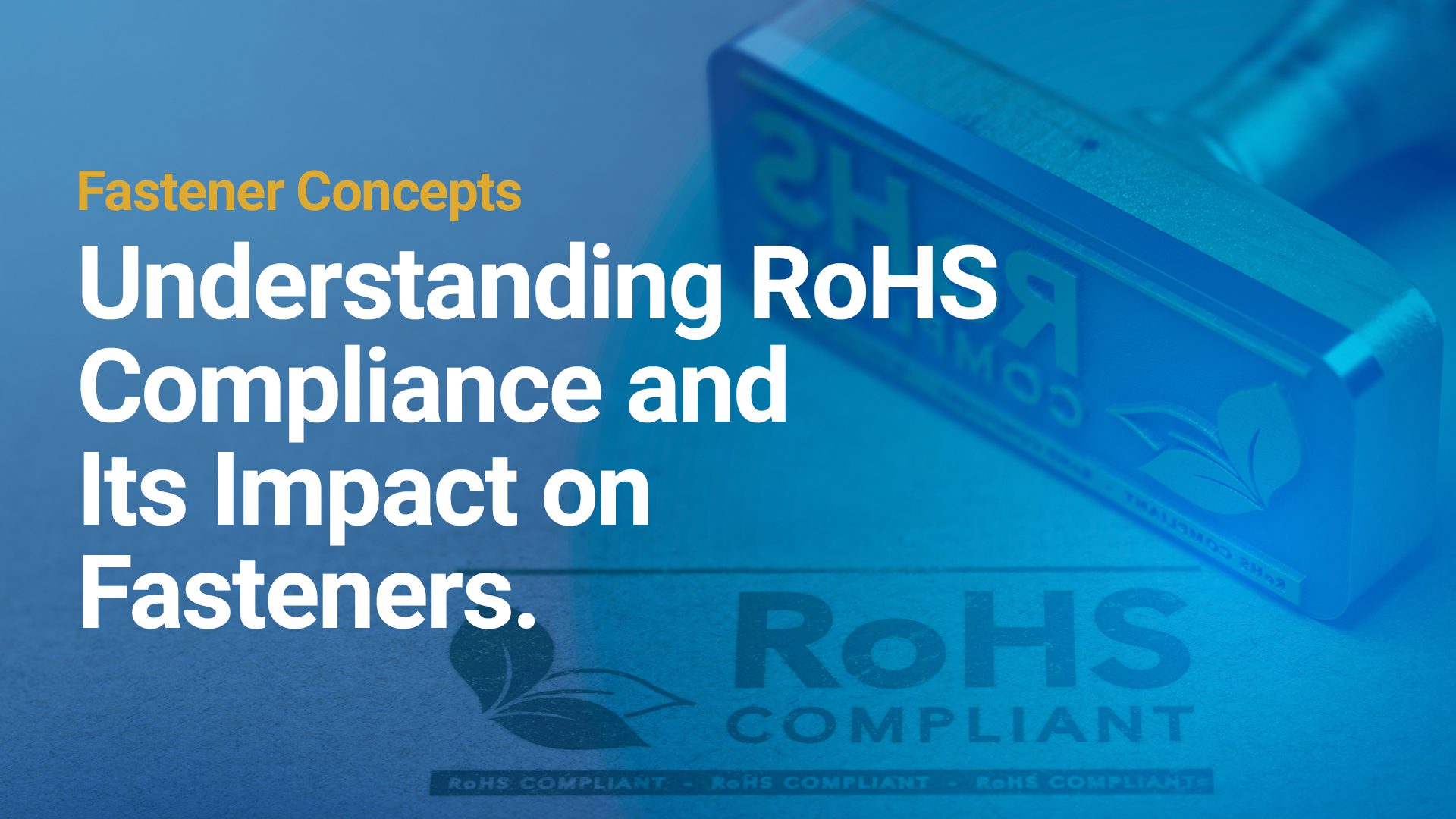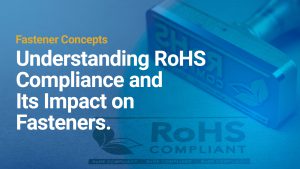
Understanding RoHS Compliance and Its Impact on Fasteners
April 21, 2025
In today’s manufacturing and distribution landscape, environmental compliance plays a major role in how products are sourced, sold, used, and disposed of. With manufacturers and suppliers facing increasing pressure to reduce their reliance on hazardous materials across their supply chains, many are paying closer attention to the materials that go into everything they source, distribute, or build. One of the most widely recognized environmental directives impacting sourcing, product design, and manufacturing is the Restriction of Hazardous Substances, better known as RoHS.
But what exactly is this directive?
Understanding RoHS
RoHS is a European Union directive that restricts the use of 10 hazardous substances commonly found in electrical assemblies and electronics. While it primarily applies to the EU, many global manufacturers and suppliers, including those in the US, comply with these standards to meet international market requirements.
The goal of this directive is to minimize the release of hazardous substances into the environment, particularly during disposal, and to reduce the risk of exposure during manufacturing and consumer use. By limiting the presence of these substances in electronics, RoHS helps protect both the environment and human health.
RoHS restricts the use of:
- Lead
- Mercury
- Cadmium
- Hexavalent Chromium
- Polybrominated Biphenyls
- Polybrominated Diphenyl Ethers
- Bis(2-Ethylhexyl) Phthalate
- Benzyl Butyl Phthalate
- Dibutyl Phthalate
- Diisobutyl Phthalate
Despite their risks, these hazardous materials have historically been used in a wide range of everyday electronic products and materials. Common examples include solder, batteries, electronic components, cable sheathing, switches, thermostats, fluorescent lamps, dyes and pigments, flame retardants in plastic enclosures and computer monitors, PVC, vinyl insulation on electrical wires, and more.
How RoHS Impacts Fasteners
You might not immediately associate fasteners such as bolts, screws, nuts, and washers with electronics. However, in many industries, they are essential components of electronic and electrical assemblies. If a fastener is used in a product that falls under the scope of RoHS, it must also meet the directive’s compliance standards.
RoHS compliance for fasteners often comes down to the materials used in the plating or coating applied to the fastener’s base material. For example, hexavalent chromium has traditionally been used in corrosion-resistant platings, but it is restricted under RoHS. As a result, many fasteners now use RoHS-compliant alternatives such as trivalent chromium or zinc-nickel platings.
What to Look for When Souring Fasteners
When sourcing fasteners, it’s important to verify RoHS compliance with documentation such as a Declaration of Conformity or Material Certification from your supplier. A reliable distributor should be able to provide this information and help you navigate the specifics based on your application. At Earnest Machine, we can provide this documentation to our customers upon request.
RoHS compliance also goes beyond being a legal requirement in certain markets; it’s a mark of responsible sourcing and distribution for suppliers and manufacturers. By choosing RoHS-compliant fasteners, you’re ensuring that both your products and your customers’ products meet environmental standards, keep hazardous materials out of the supply chain, protect human health, and contribute to a more sustainable future.
If you’re unsure whether your current fasteners meet RoHS requirements, it may be time for a closer look. Our Sales team is here to answer your questions and recommend RoHS-compliant alternatives that meet your specific needs.
Have a question for our team? Contact us today! Call +44 (0) 1902 711041 or email ukenquiry@earnestmachine.com.
Related Posts

Understanding RoHS Compliance and Its Impact on Fasteners
In today’s manufacturing and distribution landscape, environmental compliance plays a major role in how products are sourced, sold, used, and disposed of…

What are the Benefits of Coating Fasteners?
What exactly is a coating, and why are coatings important for industrial fasteners? Coating refers to the use of powder or chemical additions to the surface of…

Why is Plating Important for Industrial Fasteners?
What exactly is a plating, and why are platings important for industrial fasteners? Plating refers to the process of “electroplating,” where a metallic finish…

What is a PPAP and how does it compare to other certifications?
Many customers will request a “cert” (certification) when ordering fasteners. The term “cert” can have different meanings from one customer to another.


